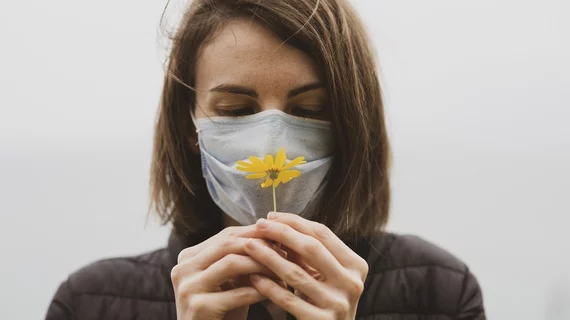Image-guided treatment may restore sense of smell in long-COVID patients
An image-guided, 10-minute procedure may restore the sense of smell for patients suffering from long COVID, according to new data being presented next week at RSNA 2023.
Recent research has shown that as many as 60% of COVID-19 patients suffer from parosmia, a condition in which the nose no longer works correctly. Most recover their sense of smell over time. But for others, this can persist for months or even years, with some developing phantosmia, a condition that causes individuals to detect smells that do not exist.
Scientists have experimented with injecting an anesthetic directly into nerves on one side of the neck to stimulate the nervous system. In a study involving patients treated with such computed tomography-guided “stellate ganglion block,” 59% reported improved symptoms after seven days.
“The initial patient had a tremendously positive outcome, almost immediately, with continued improvement to the point of symptom resolution at four weeks,” lead author Adam C. Zoga, MD, MBA, a professor of musculoskeletal radiology at Jefferson Health in Philadelphia, said in a Nov. 20 announcement from the Radiological Society of North America. “We have been surprised at some outcomes, including near 100% resolution of phantosmia in some patients, throughout the trial.”
An ear, nose and throat specialist referred 54 patients for the study after they experienced at least six months of post-COVID parosmia that proved resistant to pharmaceutical and topical therapies. Investigators used CT to help position the spinal needle at the base of the neck for injection into the stellate ganglion, which delivers signals to the head, neck, arms and parts of the chest.
Zoga et al. also added a small dose of corticosteroid to the anesthetic, believing that the coronavirus may cause nerve inflammation. A total of 37 patients returned for follow-up assessment and 22 of them (59%) reported improved symptoms a week after treatment. At the one-month mark, 82% relayed significant progressive improvement, and at three months, subjects saw an average 49% improvement in their symptoms (with a range of 10% to 100%).
Investigators administered a second injection on the opposite side of the neck (contralateral) to 26 patients following a six-week interval. Treatment failed for those who previously did not respond to the initial injection. However, 86% of those who made progress after the first treatment said the contralateral injection further improved their symptoms.
“Other treatments have failed to date. This injection is working,” Zoga said in the announcement.

